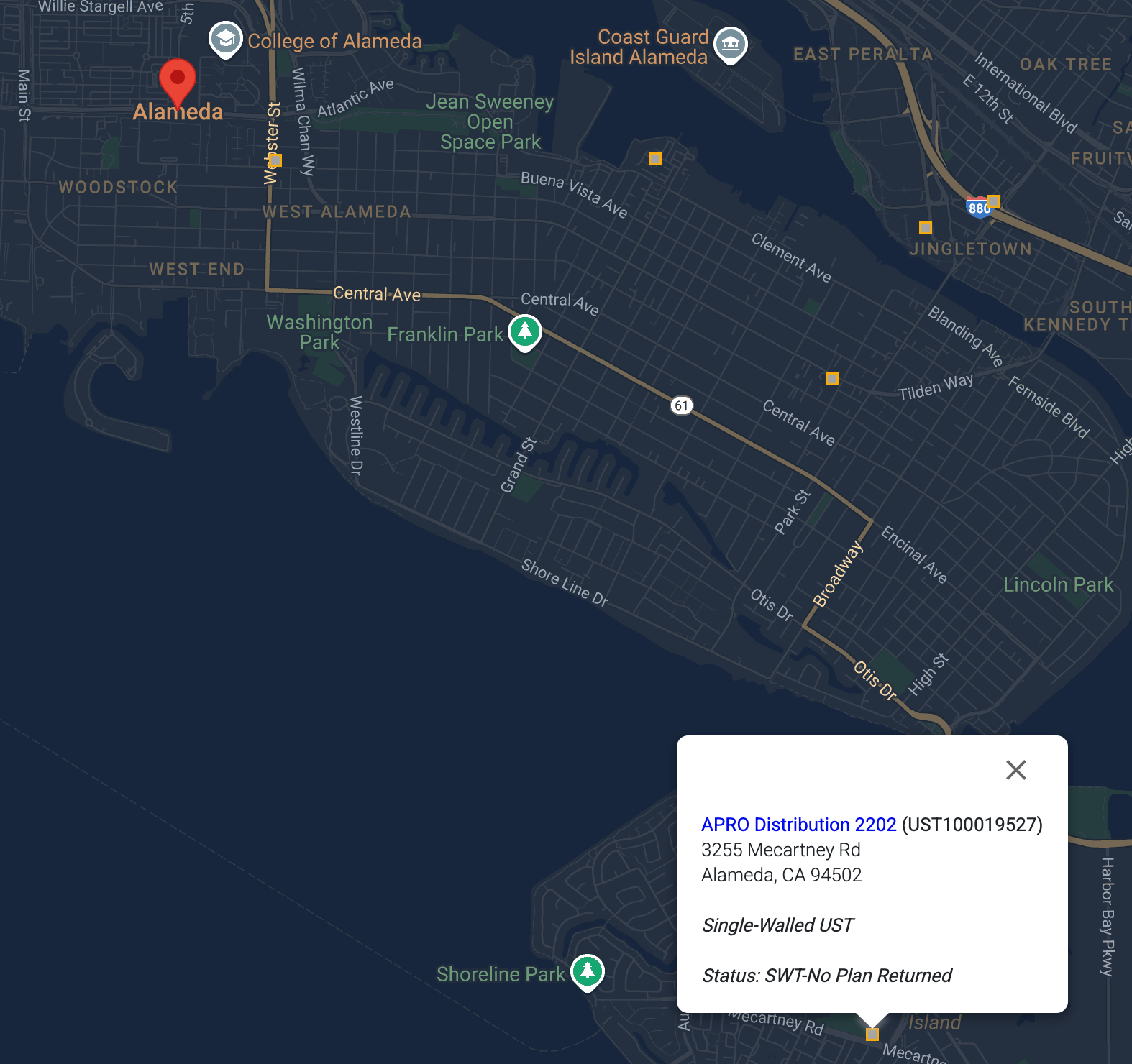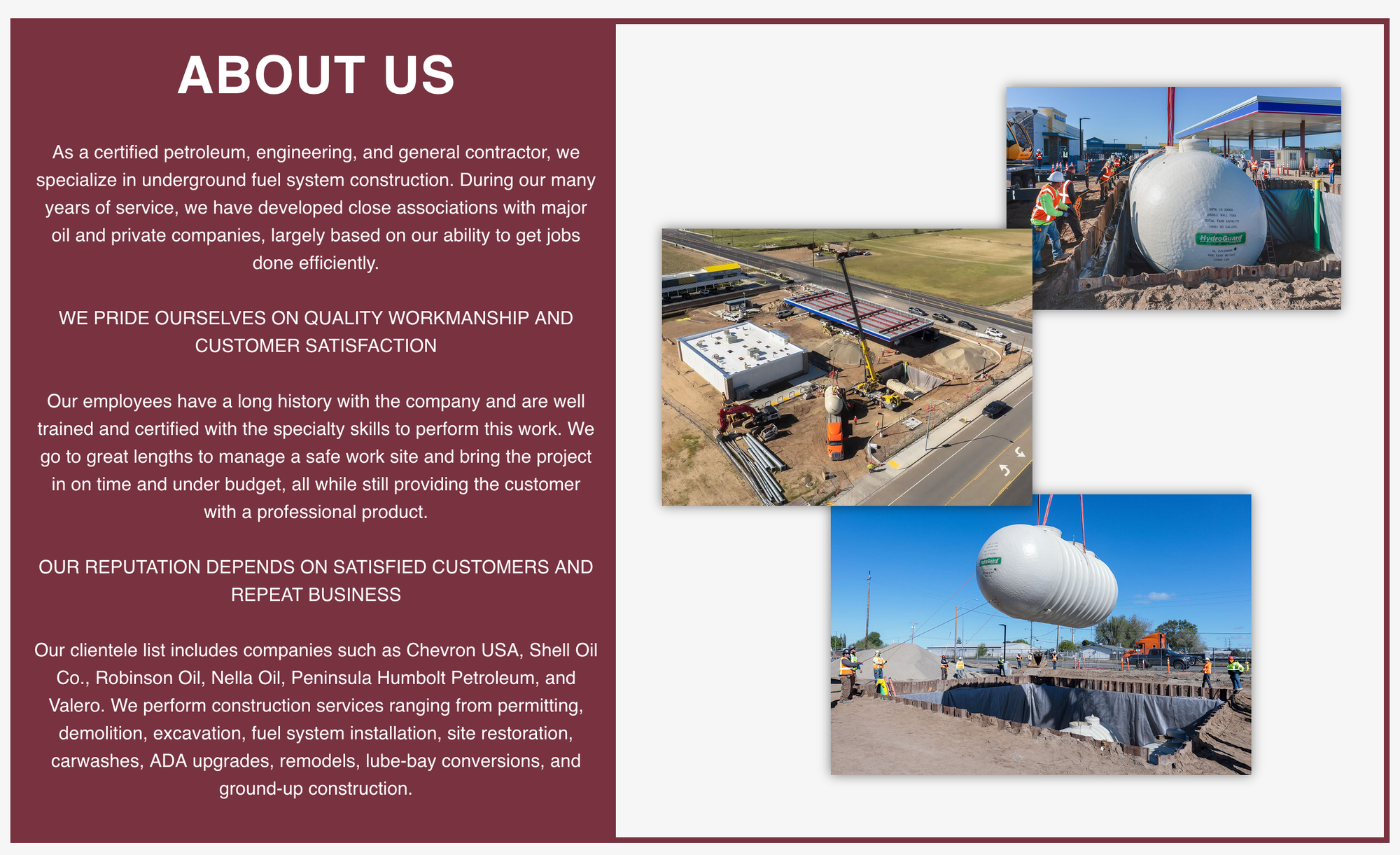Even though I didn't yet have a driver's license, one of the summers I worked at a camp on the Stanford campus, my skills were in demand whenever the other counselors had to drive the camp van to run errands. Many gas stations around the South Bay and Peninsula were closed for construction that summer, and so my knowledge of random neighborhoods and shopping centers was useful whenever the van's driver would unexpectedly find a gas station closed and need to look for another that was actually open.
That memory came back to me recently, after signing into nextdoor.com to see what Bay Farm residents may be posting about the preliminary application to redevelop the site of Bay Farm's shopping center.
City staff's full post is also publicly available on the city's Facebook page.
What I did learn from the comment threads on Nextdoor was a new wrinkle: the pending closure of the Harbor Bay 76 gas station. According to Nextdoor comments as well as a letter to the editor in the Alameda Post, the gas station and repair shop will be closing on November 30.
The apparent reason: the gas station's underground storage tank won't be compliant with state safety and environmental requirements as of the end of this year. Instead of upgrading the tank, the owners will be closing the business.
1988 and 1998
In 1988, the federal EPA adopted new regulations requiring that "underground storage tanks have spill and overfill prevention devices and corrosion protection systems for any metal parts." Going forward, newly installed tanks needed to meet these requirements immediately. In contrast, the owners of existing tanks were given 10 years to "to upgrade or properly drain and close tanks that had been installed before the new standards were adopted."
That deadline scheduled for exactly December 22, 1998 was apparently why in the summer of 1998 my fellow computer camp counselors and I had so much trouble finding open gas stations to fill up the camp van. (Our camp's assigned golf cart was battery powered, so we drove that more frequently — and much more wildly — when not indoors teaching "how to make your own World Wide Web page" and "intro to BASIC" classes.) Even with an entire decade of advanced notice, so many gas stations owners had put off the required safety improvements until the last minute.
2014 and 2025
In 2014, Gov. Jerry Brown signed into law Senate Bill 445, starting another decade-long clock. By December 31, 2025, all single-walled underground storage tanks in California would have to be closed or replaced with modern double-walled tanks. (SB 445 also extended and expanded clean-up funds, loans, and grants. More on that in a minute.)
According to a few commenters of nextdoor.com, that deadline to replace single-walled underground storage tanks is why the Harbor Bay 76 gas station is closing.
To check, I had a look at the State Water Board GeoTracker. (Is SWRCB the least melodic acronym for a Sacramento bureaucracy?)

Yes, there's a single-walled UST (the TLA for underground storage tank) at the Harbor Bay Landing shopping center site, with no plan for remediation returned to the State Water Board.
Note that there are some more orange-stroked squares for single-walled underground storage tanks in Alameda (as well as in Oakland):
- the Chevron at 1802 Webster St. has a single-walled UST, with no plan returned to the State Water Board
- Alameda Police Department's headquarters on Oak St
- Alameda's City Maintenance Service Center at the north end of Grant St
A quick search of the city's permitting system shows that a contractor acting on behalf of Chevron USA Inc. just at the start of October filed for permits to remove four existing underground storage tanks from 1802 Webster St. and to replace them with new double-walled tanks.
(There appear to be no recently submitted permits for the Harbor Bay Landing site.)
A quick search of the city's legislative system shows that in September 2024 the city hired an engineering firm to plan to replace the city's four underground storage tanks:
Three are located at the City’s Maintenance Service Center (MSC) and provide fuel to the City’s fleet for everyday operations, while maintaining a sufficient reserve for emergency events. The fourth UST is located at the Police Department (APD) and fuels the facility’s emergency back-up generator, ensuring the continuity of critical operations during power outages.
In July 2025, City Council approved a contract with a San Leandro-based construction firm specializing in underground fuel systems to remove the outdated tanks, construct a new above-ground gas/diesel storage tank at the Maintenance Service Center, and construct a new underground diesel storage tank at the APD building.
Anyway, here's a screenshot from the construction firm's website showing what it looks like to actually build a new "UST":

How much does it cost?
The city paid approximately $188k for the engineering work and approximately $1.9 million for replacement and construction for its four storage tanks.
The permit application for the Chevron work lists its value as $120,000.
That's not an apples-to-apples comparison, since the former is a fully loaded cost across two sites, while the latter could be a number for one site jotted down somewhat arbitrarily on a permit application.
In any case, we can surmise that the total cost to replace a single gas station's set of underground storage tanks in Alameda lies somewhere between $120,000 and $2,000,000.
Who pays?
SB 445 wasn't just about starting the tick-tock of a timer to remove aging single-walled storage tanks, it was also about financing their replacement and clean up:
- Small businesses can apply to the "RUST Program" (which stands for Replacing, Removing, or Upgrading Underground Storage Tanks — a much smoother acronym than SWRCB :)
- Small businesses may receive a grant of up to $70,000, or up to $210,000 if it's a public gas station located in a remote location
- Small businesses may receive RUST loans up to $750,000 with below-market interests rates and 10- or 20-year terms
All of the above programs, as well as remediation for storage tanks that have been abandoned, have been funded with a small surcharge on petroleum stored in underground storage tanks throughout California since 2014.
So ultimately, most or all of the cost of upgrading outdated storage tanks at public gas stations is being covered by this state program funded by gas consumers. This is not an unfunded mandate.
Incentives
While I can't speak to the specific situation of the Harbor Bay 76 gas station operator or the land owner, an overall trend is clear: Many organizations that keep petroleum in underground storage tanks only make an effort to keep that gas from leaking into the surrounding ground when finally forced to by federal and state requirements.
Instead of making an upfront investment and amortizing it over years, many organizations apparently wait until the last minute. Both a Chevron-owned gas station (not even a franchise) and the City of Alameda are making their own required updates in the final half of this year, after 9.5 years of advanced notice. The city's upgrades won't be completed before the deadline, so during the ~6 months while there is no on-site fuel available at the Maintenance Service Center, city staff will refuel at commercial gas stations.
For the private sector, even with the "carrot" of grants (a.k.a. free money) and loans (a.k.a. cheap money), the operators of some of these leak-prone facilities apparently only respond to "sticks." And these are real sticks. In the case of the 1998 EPA rules:
The law places an affirmative obligation on the person placing fuel in an UST to check the upgrade compliance certificate which is required to be displayed by the tank owner.
So it's not just the slowpoke owner of the storage tank that is in legal trouble, it's any truck driver who comes to willingly deliver gasoline into that tank.
Protecting groundwater
When Councilmember Tony Daysog voted against Pacific Fusion's proposed research facility at Alameda Point, he said "more analysis is still needed to understand the effects, if any, of radiation generated by Pacific Fusion, specifically on the groundwater underneath it."
In contrast with his hypothetical risk, the risks of underground storage tanks containing fossil fuels are well understood. As an EPA regional administrative explained in a 1998 press release:
"Just one gallon of gasoline will ruin 5 million gallons of drinking water."
I trust that no one is trying to drink groundwater from underneath Webster St, the Municipal Services Center, the Alameda Police Department headquarters, or Harbor Bay Landing. Regardless, we can all imagine how leaking gasoline can spread and damage those areas — and can appreciate the value of minimizing the odds of underground leakage, especially leakage that could potentially continue undetected for a long while.
It's about time that every gas storage tank in Alameda — and California — be up to modern containment, monitoring, and safety standards.